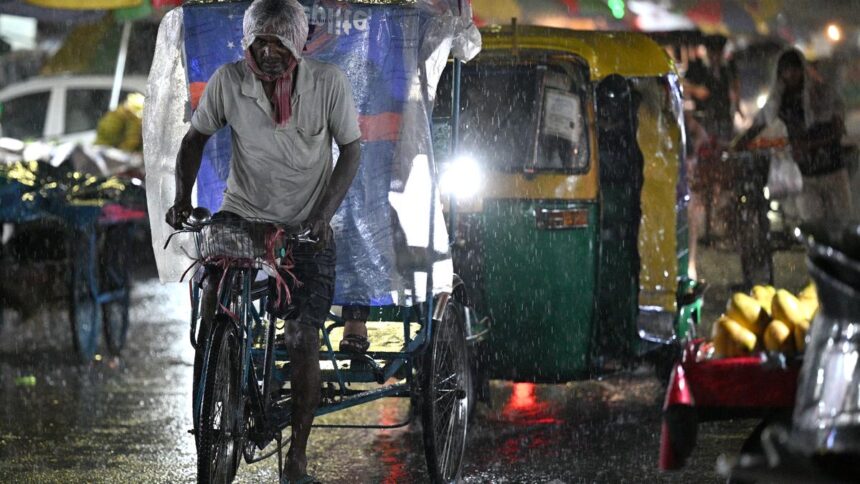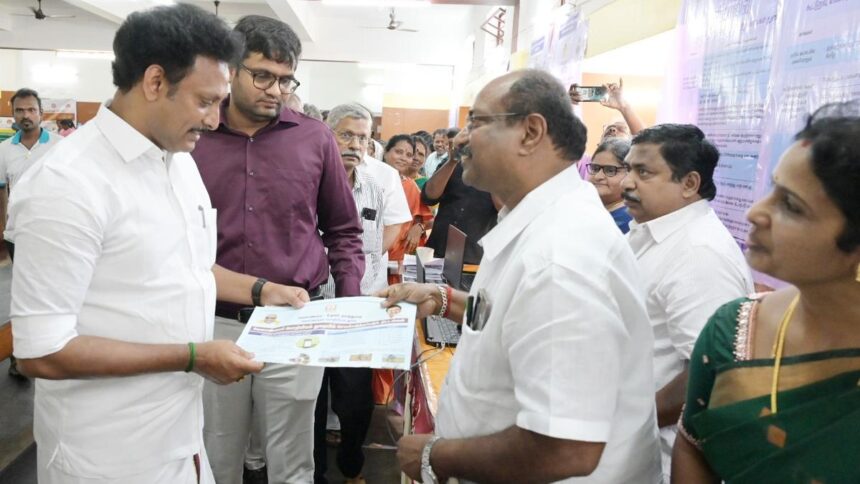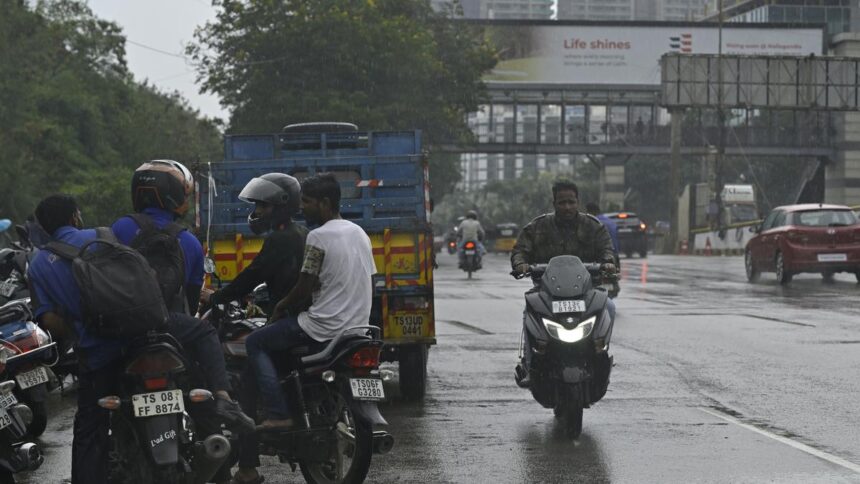
With the release of surplus water downstream, fishermen spread their nets hoping for a good catch at Prakasam Barrage in Vijayawada on Thursday.
| Photo Credit: Giri KVS
Reservoirs in Andhra Pradesh are brimming with improved water levels this monsoon season, marking a significant rebound from last year’s shortages.
According to information, the reservoirs across Andhra Pradesh are showing a marked improvement in water storage compared to the same period last year, signalling a more secure outlook for irrigation, drinking water supply, and industrial use.
The district-wise status of reservoirs across Andhra Pradesh shows a significant improvement in water storage compared to the previous year. The total storage capacity at Full Reservoir Level (FRL) across all districts stands at 469.09 tmc (thousand million cubic feet), with a dead storage capacity of 54.48 tmc. At present, the combined storage in all reservoirs is 252.13 tmc, out of which the live storage capacity is 199.71 tmc. This marks a substantial increase from the previous year’s storage of 159.88 tmc on the same date, reflecting better rainfall and reservoir management.
Among the districts, Nellore leads by a wide margin in terms of storage. With a total capacity of 156.48 tmc, the district currently holds 68.31 tmc of water, out of which 55.55 tmc is live storage. It also has the highest flood cushion of 88.16 tmc, making it the most critical district in terms of water availability and flood management. YSR Kadapa follows with 76.95 tmc total capacity and a present storage of 40.36 tmc, of which 34.90 tmc is live. The district also has a substantial flood cushion of 37.48 tmc.
Palnadu district holds the third-highest live storage at 38.72 tmc out of a total of 49.23 tmc, with a flood cushion of 4.07 tmc. Eluru district also reports strong storage figures, with a present storage of 11.90 tmc and a live storage of 10.93 tmc, compared to 5.65 tmc at the same time last year, more than doubling in volume.
In contrast, districts such as Visakhapatnam, Chittoor, and Tirupati show very limited storage capacities. Visakhapatnam has only 0.16 tmc of water currently, with 0.04 tmc as live storage. Chittoor holds 0.15 tmc, with 0.13 tmc as live storage. Tirupati’s figures are 1.05 tmc in total, with 0.98 tmc as live.
Inflows
The Krishna, Godavari, Pennar, and Vamsadhara basins are seeing strong inflows due to consistent monsoon rains. In the Krishna basin, the Srisailam reservoir has a storage of 186.52 tmc with inflows of 31,222 cusecs, while the Nagarjuna Sagar reservoir holds 306.40 tmc. Pulichintala has the highest inflow at 45,125 cusecs. At the Prakasam Barrage, 43,350 cusecs are flowing in, with 24,922 cusecs being discharged for irrigation.
In the Godavari basin, the Sir Arthur Cotton Barrage reports heavy outflow of 191,232 cusecs, having supported 258.97 tmc in irrigation this year. Other key reservoirs like Jaikwadi, Sri Ram Sagar, and Yellampally are also stable.
In the Pennar basin, Velugodu stores 14.71 tmc, Somasila 37.45 tmc, and Kandaleru 25.29 tmc. In north coastal Andhra, Yeleru stores 10.60 tmc, while the Gotta Barrage discharges 2,187 cusecs, officials say.
Published – August 07, 2025 09:40 pm IST





















